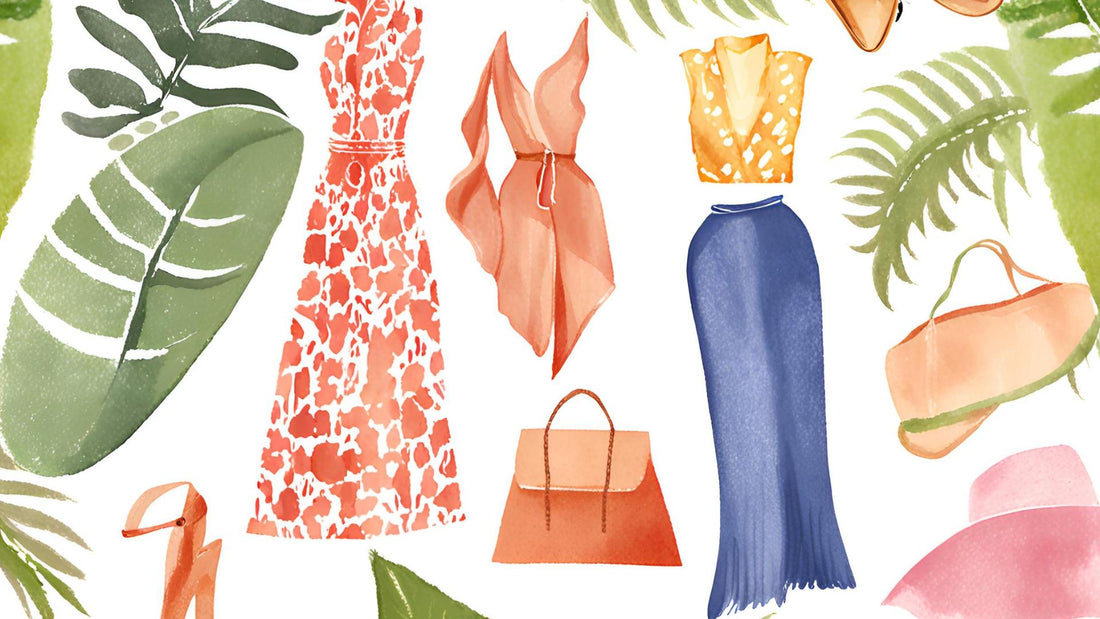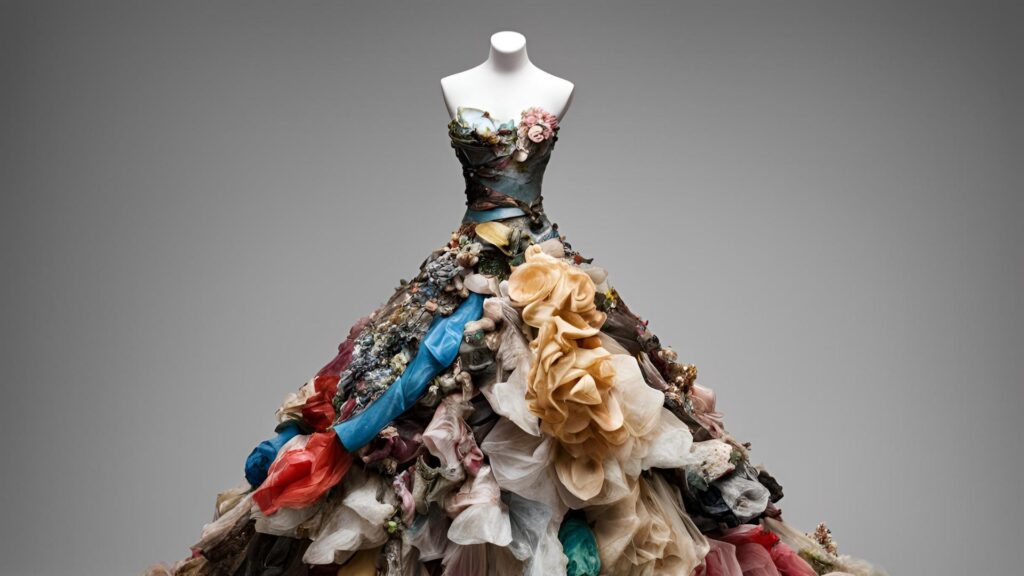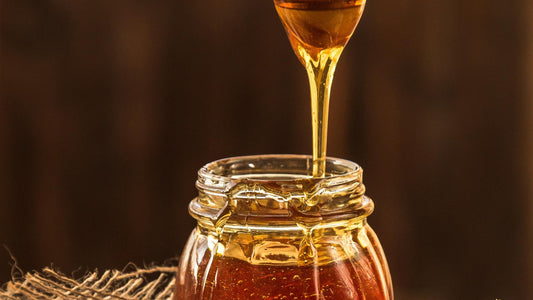
Sommermode: So sind Sie nachhaltig schick
Aktie
Hallo Modefans! Der Sommer ist da und wir alle wollen die perfekte Garderobe, um unseren tollen Stil zur Schau zu stellen oder die Überzieher auszuziehen, um der Sommerhitze zu trotzen. Während manche dazu neigen, neue Accessoires und auffällige Modeartikel wie Hüte oder Sonnenschirme anzuziehen, ziehen andere es lieber schlicht mit klassischen Stücken an, die nie aus der Mode kommen. Nehmen wir uns einen Moment Zeit, um inmitten des ganzen Sommerspaßes über etwas Wichtiges nachzudenken. Wir sollten zum Beispiel die Auswirkungen des Konsumverhaltens kennen, die mit diesen trendigen Sommeroutfits verbunden sind. Wenn der Sommer naht, geraten die Verbraucher in einen Zyklus, der sich jedes Jahr wiederholt.
Wir neigen vielleicht dazu, neue Einkäufe zu tätigen, um uns an den Sommer anzupassen oder uns von neuen Modetrends mitreißen zu lassen. Am Ende haben wir einen Haufen Kleidung, die wir anziehen wollen, nur um dann festzustellen, dass wir viele verschiedene Kleidungsstücke mehrmals tragen. Manche Kleidungsstücke bleiben für immer im Schrank versteckt, was weder nützlich noch gut für unseren Planeten ist. Jetzt ist es also an der Zeit, über das Gesamtbild und die Auswirkungen auf die Umwelt nachzudenken.

Die Modebranche verursacht etwa 10 % der weltweiten Treibhausgasemissionen. Um Ihnen ein klareres Bild zu geben: Die Modebranche setzt so viel Treibhausgase in die Umwelt frei, wie der Transportsektor und die Logistik zusammen. Als Die drei größten Umweltverschmutzer im globalen Sektor hat erhebliche Auswirkungen, die berücksichtigt werden müssen. Obwohl die Umstellung auf nachhaltige Mode ein neuer Trend sein kann, bedeutet Nachhaltigkeit nicht, dass man beim Stil Kompromisse eingehen muss. Wir sind hier, um Ihnen zu beweisen, dass Sie Ihr Modespiel rocken und gleichzeitig den Planeten schonen können.
Hier finden Sie praktische Tipps, wie Sie in grüner Mode fantastisch aussehen und sich mit Ihren Entscheidungen gut fühlen.
1. Zeitlose Klassiker für modische Vielseitigkeit
Beim Zusammenstellen einer umweltfreundlicheren Sommergarderobe sind zeitlose Klassiker Ihre besten Freunde. Diese Garderoben-Superhelden bleiben zu jeder Jahreszeit in Mode. Außerdem sind sie wie Chamäleons, sodass man sie mit verschiedenen Accessoires und Lagen kombinieren kann, und voilà! Es ist jedes Mal ein völlig neuer Look des Tages. Wenn Sie in diese zeitlosen Modeartikel investieren, sind Sie nicht im endlosen Einkaufszyklus gefangen.
Hier sind zeitlose Modestücke, die perfekt für den Sommer (und alle Jahreszeiten) sind:
- Fließendes Maxikleid in Unifarbe
- Ein hoch taillierter Rock aus beliebigem Material: Denim, veganes Leder, Öko-Baumwolle, Bio-Satin usw.
- A-Linien-Midirock in neutraler Farbe
- Gestreiftes Breton-Top
- Weißes Leinenhemd mit Knopfleiste: Wählen Sie hochwertige Materialien wie 100 % Leinen
- Klassische Motorradjacke: Entscheiden Sie sich für veganes Leder
- Weiße oder schwarze Sneaker: Halten Sie das Schuhdesign minimalistisch
- Klassische Sonnenbrillen (zB Cat-Eye-Sonnenbrillen)
2. Synthetik vs. Baumwolle
Die Art des Stoffmaterials spielt eine Schlüsselrolle bei der Sicherstellung, dass es sich um ein umweltfreundliches Material handelt. Beispielsweise werden synthetische Materialien wie Polyester und Nylon häufig aus fossilen Brennstoffen gewonnen. und haben einen erschreckenden CO2-Fußabdruck. Diese synthetischen Stoffe tragen auch zu einem weiteren dringenden Problem bei: der Verschmutzung durch Mikroplastik . Jedes Mal, wenn wir Kleidungsstücke aus diesen Materialien waschen, gelangen Tausende winziger Mikroplastikpartikel in unsere Wasserversorgung, was eine Bedrohung für aquatische Ökosysteme darstellt und möglicherweise in unsere Nahrungskette gelangt.
Daher können wir zweimal über die Umweltauswirkungen nachdenken, wenn es um synthetische Stoffe geht. Lassen Sie uns überlegen, ob wir uns für natürlich-synthetische entscheiden. Mischungen . Diese Mischungen kombinieren synthetische Fasern mit natürlichen Fasern, wie Bio-Baumwolle oder Hanf. Durch die Einarbeitung natürlicher Fasern können wir die Abhängigkeit von nicht erneuerbaren Ressourcen verringern und die Umweltauswirkungen unserer Kleidungswahl mindern. Zum Beispiel GRÜN S HIRTS bietet ausschließlich biologisch und ethisch produzierte Textilien an.

Bei Baumwolle muss man sich unbedingt darüber im Klaren sein, dass sie sehr viel Wasser verbraucht. Konventionell angebaute Baumwolle benötigt während des gesamten Anbauprozesses eine beträchtliche Menge Wasser. Für die Herstellung eines einzigen T-Shirts aus konventioneller Baumwolle werden etwa 2.700 Liter Wasser benötigt.
Hier die gute Nachricht: Sie können etwas bewirken! Achten Sie beim Aussuchen Ihrer Kleidung auf „Bio-Baumwolle“. Im Gegensatz zur normalen Baumwolle benötigt Bio-Baumwolle nur etwa 10 % des Wassers, das herkömmliche Baumwolle benötigt. Außerdem wird sie ohne synthetische Pestizide und Düngemittel angebaut, die unsere Umwelt schädigen können, was auch dazu beiträgt, unser Wasser sauber zu halten.
Achten Sie also beim nächsten Einkauf von Sommer-Essentials auf Kleidungsstücke aus nachhaltige Stoffe . Achten Sie auf Etiketten auf Naturfasern und Bio-Zertifizierungen.
3. Qualität statt Quantität
Die Versuchung, einen Haufen superbilliger Kleidung zu kaufen, kann sehr schädlich sein. Erstens gilt: Je billiger die Kleidung verkauft wird, desto billiger ist das Material. Solche Kleidungsstücke oder billige Modeartikel halten dem Test der Zeit nicht stand. Es lohnt sich, in hochwertige Modeartikel zu investieren, die die Kosten für den erneuten Kauf neuer Artikel senken können. Hochwertige Mode ist haltbarer und hat eine bessere Lebensdauer. Eine Möglichkeit, den Sommer zu betrachten, ist, dass wir oft haltbare Kleidung brauchen, die wir für hochintensive Trainingseinheiten oder Aktivitäten mit mehr Bewegung tragen. Im Sommer neigen wir dazu, an den Strand zu gehen, in ein Schwimmbad zu springen, eine Wanderung zu unternehmen oder abenteuerlicher im Freien zu sein.

Dies erfordert hochwertige Modeartikel, die den Belastungen all dieser Aktivitäten standhalten. Die Wahl hochwertiger Stücke stellt außerdem sicher, dass jedes Stück, das Sie besitzen, wirklich geschätzt und regelmäßig getragen wird. Dieser Ansatz trägt dazu bei, Abfall zu minimieren und die Nachfrage nach Fast Fashion zu reduzieren.
Ein versierter Käufer zu sein bedeutet auch , Bewertungen zu lesen und herauszufinden, ob der Marke Nachhaltigkeit am Herzen liegt. Berühren Sie den Stoff ein wenig und prüfen Sie, ob er sich wie ein langlebiges Material anfühlt, bevor Sie ihn kaufen. Denken Sie daran, ein wenig mehr Überlegung beim Einkaufen kann für Sie und unsere Gaia (Personifizierung der Erde) sehr hilfreich sein.
4. Reparieren Sie es, werfen Sie es nicht weg
Verabschieden Sie sich nicht von Ihrer Kleidung, nur weil sie einen kleinen Riss hat oder repariert werden muss. Wie wäre es, wenn Sie die Grundlagen des Nähens erlernen? Oder, wenn das nicht Ihr Ding ist, schauen Sie bei einem Schneider in Ihrer Nähe vorbei. Sie sind wie die Ärzte, die die Lebensdauer von Kleidung verlängern! Das Reparieren von Kleidungsstücken oder Accessoires ist ein großer Gewinn für die Reduzierung von Kleidermüll. Noch besser ist, dass ein kreativer Schneider dazu neigt, neue modische Statement-Kleidung zu entdecken, indem er unsere alten Kleidungsstücke und Accessoires zusammen aufwertet. Wir können aus ungetragenen oder unbenutzten Materialien ein völlig neues Modestück kreieren. Stellen Sie sich vor, Sie verwandeln ein abgenutztes T-Shirt in ein cooles bauchfreies Top für den Strand oder machen aus einer alten Jeans eine stylische, wiederverwendbare Einkaufstasche.

Und das ist der lustige Teil: Sie können dabei Ihren einzigartigen Stil zur Schau stellen! Gehen Sie einfach auf YouTube oder andere soziale Orte im Internet (wie unser Instagram und TikTok ), und Sie werden jede Menge Upcycling-Ideen finden, die Ihnen helfen, ein nachhaltiger „Modedesigner“ für Ihre alte oder kaputte Kleidung zu werden .
5. One-In-One-Out-Moderegel
Ein Minimalist zu sein, kann ein transformierender Schritt auf Ihrem Weg zu nachhaltiger Mode sein. Wie kann man in der Mode minimalistisch sein?
-
Räumen Sie ab und zu Ihren Kleiderschrank auf.
Wir empfehlen, dies jede Saison oder viermal im Jahr zu tun. Behalten Sie die Stücke, die Ihren Stil und das, was Ihnen wichtig ist, wirklich zur Geltung bringen. Behalten Sie Stücke, die upgecycelt werden können! -
Wenden Sie die Regel „Eins rein, eins raus“ an.
Wenn Sie ein neues Kleidungsstück in Ihren Kleiderschrank legen, sollten Sie auch ein vorhandenes Kleidungsstück entfernen, um Platz zu schaffen. So stellen Sie sicher, dass Ihre Sammlung zielgerichtet bleibt und nicht zu viel davon anwächst. -
Spenden oder verkaufen Sie unbenutzte.
Sie können unbenutzte Kleidung oder Modeartikel an Wohltätigkeitsorganisationen wie Humana spenden. Alternativ können Sie sie mit Ihren Freunden oder Ihrer Familie teilen, die sie genauso lieben werden wie Sie. Es verbreitet auch Modefreude in Ihrem Umfeld. Sie können zusätzliches Geld verdienen, indem Sie unbenutzte Modeartikel online verkaufen, beispielsweise auf E-Commerce-Plattformen wie Vinted oder in sozialen Medien. Gebrauchte Modeartikel sind aus mehreren Gründen sehr gefragt.
6. Die 90-Trage-Moderegel
Hier ist ein Trick, den Sie beim Kauf neuer Kleidung beachten sollten. Er heißt „90-mal-tragen-Regel“. Er ist ganz einfach. Fragen Sie sich einfach: „Kann ich dieses Kleidungsstück mindestens 90 Mal tragen?“

Wenn Sie sich dazu verpflichten, etwas 90 Mal zu tragen, sorgen Sie dafür, dass das Kleidungsstück länger hält. Denken Sie mal darüber nach: 90 Mal Tragen ist nur eine Saison, also 3 Monate. Sie müssen es nicht so oft ersetzen, was unglaublich ist, um weniger Kleidung wegzuwerfen. Sie tragen auch Ihren Teil dazu bei, all diese Fast-Fashion-Probleme zu verlangsamen.
Wenn Sie sich nicht vorstellen können, den Artikel 90 Mal zu tragen, ist das möglicherweise ein Hinweis darauf, dass Sie ihn nicht kaufen sollten.
Hier ist die Runway-Zusammenfassung
Mit diesen sechs Geheimnissen für einen stilvollen und viel umweltfreundlicheren Sommer können Sie Ihren Sommerstil mit Stolz zur Schau stellen:
- Zeitlose Klassiker für Vielseitigkeit
- Synthetik vs. Baumwolle
- Qualität vor Quantität
- Passen Sie es an, lassen Sie es nicht weg
- One-In-One-Out-Regel
- Die 90-Trage-Regel
Zur Erinnerung: Niemand zählt, wie oft Sie Ihre Modekleidung tragen. Was wirklich zählt, ist, dass Sie sich mit Ihrer Kleidung und Ihren Accessoires wohlfühlen und viel vernünftigere Entscheidungen treffen. Umweltbewusst zu sein ist nicht nur der coolste Trend der heutigen Zeit, sondern es ist auch eine absolut kluge Praxis, sicherzustellen, dass unsere Modeartikel umweltfreundlich und langlebig sind. Wir glauben fest daran, dass Sie in Sachen Mode für diesen Sommer mutigere Entscheidungen treffen können.
Also, ein Hoch auf Mode, die schick und umweltfreundlich ist, und ein Hoch auf Sie. Alles Gute!


Hallo, ich bin Aleesya Karim aus Malaysia. Wenn ich ein Baum sein könnte, wäre ich eine Kokospalme. Ihre unglaubliche Nützlichkeit, sogar nachdem sie abgestorben sind, ist wirklich cool. Ich hoffe also, dass meine Artikel meine Frucht- oder Blattspende für Ihre grüne Reise sein können ;)





1 Kommentar
Very useful information, thanks for sharing. I love your tips and the recommendations. Fashion is a big topic, I would love to read more about sustainable solutions in this area.